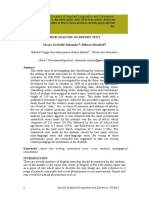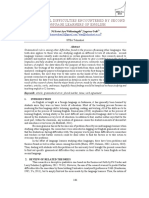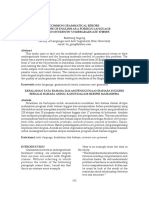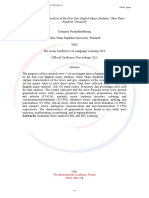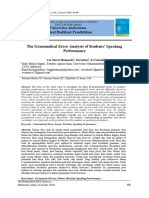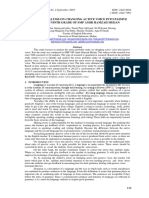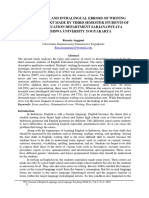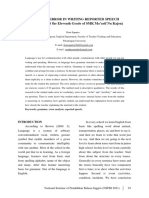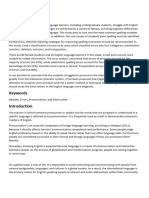0% found this document useful (0 votes)
33 views9 pagesAnalysis of Students' Error in Constructing Passive Voice
The document discusses a study analyzing students' errors in constructing passive voice sentences in English. The study identified types of errors made by 40 first-semester students through tests of sentence completion and construction of passive voice. The results showed students had low English grammatical competence in passive voice as they did not fully understand passive voice forms. Common errors included incorrect use of auxiliary verbs and omission of 'to be' verbs. The study aims to help improve teaching of passive voice.
Uploaded by
hairoriCopyright
© © All Rights Reserved
We take content rights seriously. If you suspect this is your content, claim it here.
Available Formats
Download as PDF, TXT or read online on Scribd
0% found this document useful (0 votes)
33 views9 pagesAnalysis of Students' Error in Constructing Passive Voice
The document discusses a study analyzing students' errors in constructing passive voice sentences in English. The study identified types of errors made by 40 first-semester students through tests of sentence completion and construction of passive voice. The results showed students had low English grammatical competence in passive voice as they did not fully understand passive voice forms. Common errors included incorrect use of auxiliary verbs and omission of 'to be' verbs. The study aims to help improve teaching of passive voice.
Uploaded by
hairoriCopyright
© © All Rights Reserved
We take content rights seriously. If you suspect this is your content, claim it here.
Available Formats
Download as PDF, TXT or read online on Scribd
/ 9




